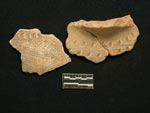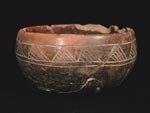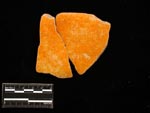
| FAMSI © 2004: Arturo René Muñoz |
|||||||||||||||||||||||||||||||||||||||||||||||||||||||||||||||||||||||||||||||||||||||||||||||||||||||||||||||||||||||||||||
|
The Ceramic Sequence of Piedras Negras, Guatemala: Type and Varieties The Naba Ceramic Phase (A.D. 350–A.D. 560) Early Classic ceramics are known from every sector of the site, including the Acropolis, residential groups in all areas of the site core, and residential groups outside the site core. In many cases, the Naba phase ceramics are found immediately above bedrock and mark the initial construction of a large number of monumental structures. The great typological similarity between the Piedras Negras Early Classic ceramics and Early Classic materials known from elsewhere in the Maya Lowlands sites provides the principle means for dating the Naba ceramic phase. The appearance of Petén Gloss Wares and distinctive vessel modes (e.g. basal flanges, hollow conical supports, and bolstered rims) indicate that Naba is roughly equivalent in time to Tzakol 2 and Tzakol 3 assemblages known from elsewhere. This estimate agrees with absolute dates derived from inscriptions associated with Early Classic architecture in the South Group Court, and with a carbon date derived from a late Early Classic termination found in Acropolis (Golden 2002). Orange monochromes (Aguila Orange) dominate Naba assemblages, though monochrome blacks (Balanaza Black) and browns (Pucte Brown) are also common. Fluting and incising are common decorative modes, though some examples of carved or gouged decoration are known. In general, these are indistinguishable from analogous types, such as Lucha Incised and San Clemente Gouged-Incised, found elsewhere. The major feature differentiating the Naba assemblages from Early Classic assemblages elsewhere is the absence of ring base, basal flange bowls. Instead, shallow dishes with hollow conical tripod supports and a basal ridge are the most common plate forms. The type most commonly associated with basal flange bowls, Dos Arroyos Orange Polychrome, is exceedingly rare at Piedras Negras. Given the high typological similarity with Early Classic assemblages known from elsewhere in the Petén, the absence of Dos Arroyos and the related plate form is difficult to explain.
|
|||||||||||||||||||||||||||||||||||||||||||||||||||||||||||||||||||||||||||||||||||||||||||||||||||||||||||||||||||||||||||||
|
Text links to all pages at this site are available at the FAMSI INDEX |
|||||||||||||||||||||||||||||||||||||||||||||||||||||||||||||||||||||||||||||||||||||||||||||||||||||||||||||||||||||||||||||


